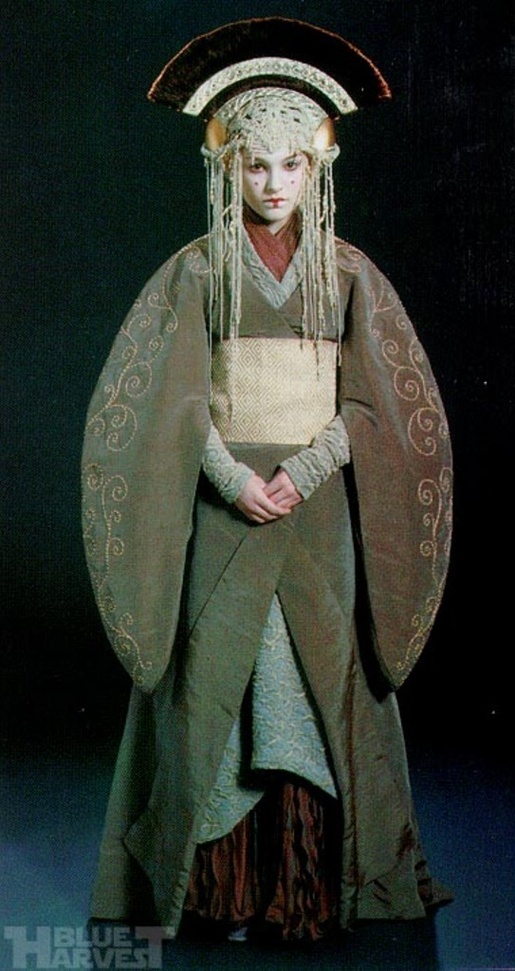
|
||
 Enlarge
Enlarge
|
Licensing | |
This image is Natalie Portman as Queen Amidala in Star Wars: Episode I: The Phantom Menace. Her dress is clearly a mutation of a kimono with its long sleeves, V-neck, and flowing fabric, all topped off by the most obvious reference of all, an obi sash. Not only that, but George Lucas readily admits that the Queens ritualistic white face paint with red dots on the cheeks and lips was inspired by Kabuki makeup (as was Darth Maul’s makeup). What does it imply when a non-Japanese character played by a non-Japanese actor or actress visibly dresses in Japanese style? Japanophilia. Perhaps not on the part of Natalie Portman who only wore the outfit but certainly on the part of Lucas and his collaborators. George Lucas admits to idealizing Japan as the exoticized “other” and encouraging his creative team, even in 1976, to look for inspiration from Japan in creating alien worlds. Queen Amidala is the leader of a romanticized culture called the Naboo, and various Asian styles are incorporated into the atmosphere. (Lucas also said that he wanted the Naboo throne room to resemble Imperial China). The trouble is, is that the Naboo culture becomes a conglomerate of high culture taken from Earth and reappropriated in the Star Wars Universe with no context.
This image is owned by LucasFilm and is used here courtesy of BlueHarvest.net.

This work is licensed under a Creative Commons Attribution-Noncommercial-Share Alike 2.5 License
 jedijenni
—
Última actualización Mar 30 2011 8:01 p.m.
jedijenni
—
Última actualización Mar 30 2011 8:01 p.m.


 mpitelka
mpitelka


 Star Wars as Japanophilia
Star Wars as Japanophilia
 Journal feed
Journal feed
